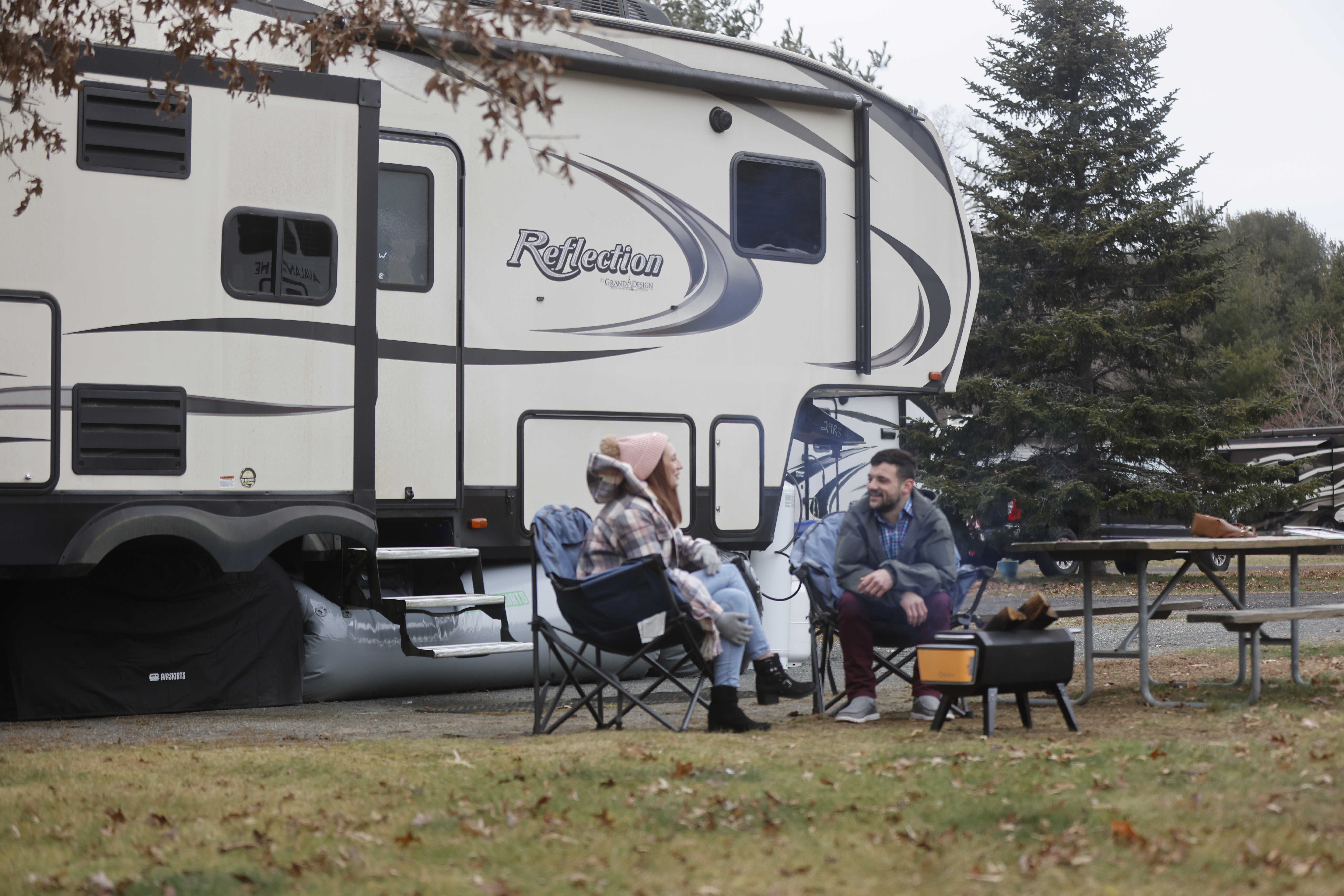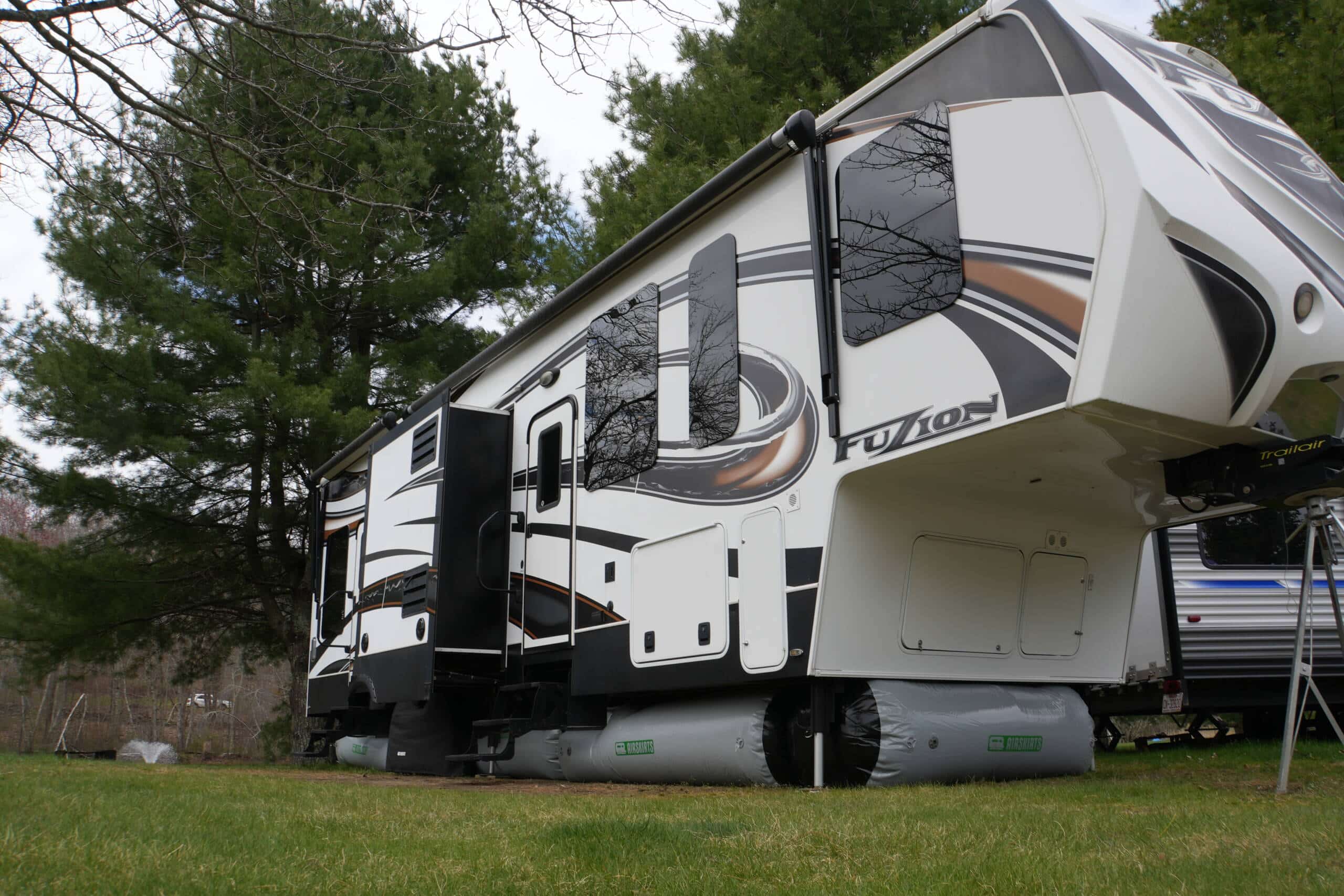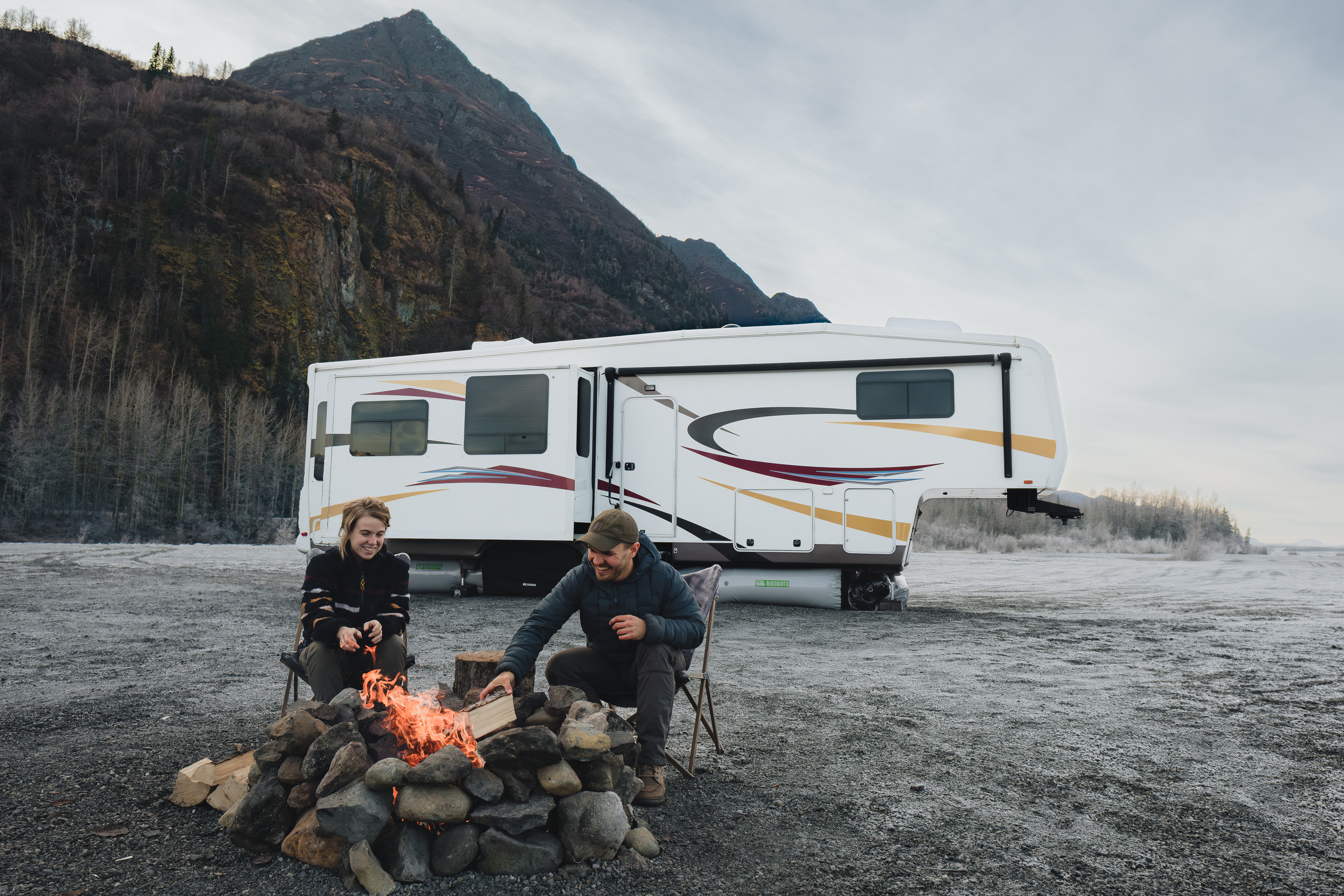How to Measure RV Length
In this post, we’ll look at how to measure RV length by camper types: fifth wheels, travel trailers, and motorhomes (Class A, B, and C) from both the manufacturer stated length perspective and the actual physical length.
If you are looking to buy an AirSkirts RV skirting kit, you can refer to our help section specific to measuring your RV for our kits, ‘How do I find the length of my RV?‘.
AirSkirts kits are based on the manufacturer stated length of the RV, not the skirtable area as you may find with other skirting methods. Though your skirted area will be shorter than the entire length of your RV, we use this number because this measurement is consistently available in manufacturer specifications available online. Our kits are designed with the hitch, bumper, and wheels taken into account.
Most travel trailers are measured from hitch to bumper, 5th wheels from kingpin to bumper, and coaches are measured from bumper to bumper. For many trailers, the number in the model refers to the “box length” or the length excluding the bumper and hitch (or neck in the case of 5th wheels). Others model numbers can correspond the the square footage of the living space.
To find the manufacturer’s length of your RV, you can search the year, make and model followed by the word “specs.” This database is also quite helpful.
The exception to this rule are Airstreams. The number in the model is the size kit you want to purchase. Example: a Globetrotter 25FB will take our Airstream 25′ kit, no need to search for specs.
For general information on RV length measurements, read below. In the future, we’ll look into RV length restrictions by state and for national parks, as well as some metrics like average, shortest, and longest length. Before we get into the specifics, we’ll give a general rundown of how to get a quick measurement on any given camper.
How to Measure an RV
What you’ll need
People: 1-2 people
Measuring tape: If you have 50ft or longer, that will cover all RV lengths, if you have a more traditional 25ft size, that’ll work for a lot of class Bs and some travel trailers, but you’ll have to measure to a mark and add your measurements to go
Notes: pen/paper or phone to record measurements
RV Length Measuring Steps
- Find your front point, there is often curvature in the front so depending on how accurate of a measurement you need, make sure you get the true front point
- Find your rear point, include any extendable parts like ladders for a true length measurement
- Measure from the front point to the rear point
- Record the measurement in feet and inches
- Repeat steps 1-3 to ensure accuracy
Understanding Differences Between Measured and Manufacturer Stated Length
So you followed the steps and you’ve measured the length of your RV, but why does it differ than the length stated by the RV manufacturer? There are a few reasons this could be the case:
- Your camper includes a ladder or other outstanding part that is not included in the manufacturer length (note sometimes manufacturer’s will give a length with, and without, a ladder
- You have a fifth wheel, and are your front point is the absolute farthest point, rather than the center of the pin that most manufacturers use as their measurement point
- You measured incorrectly





Leave A Comment